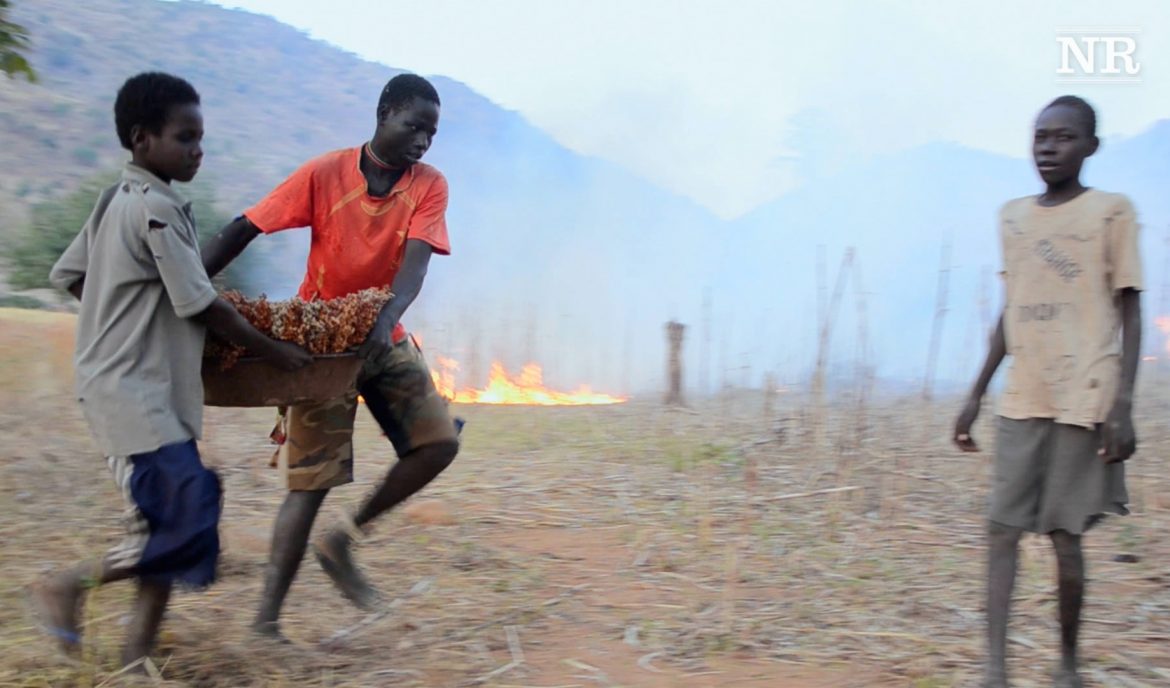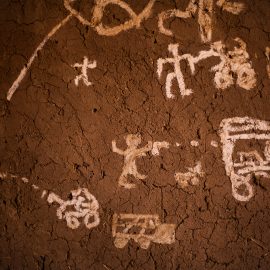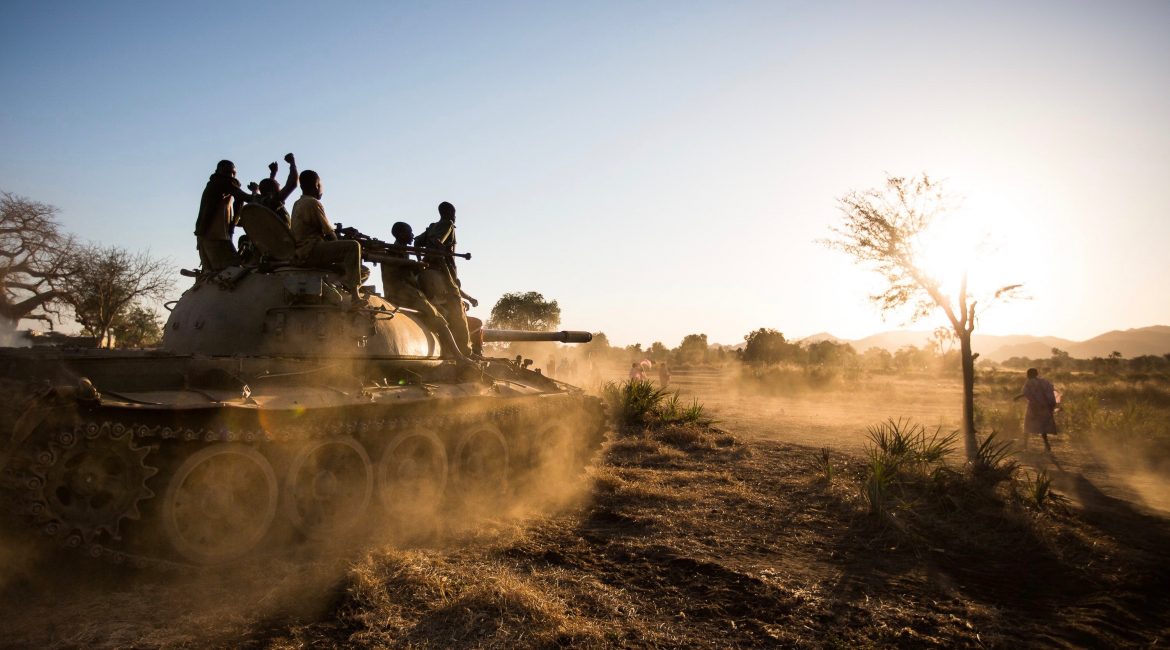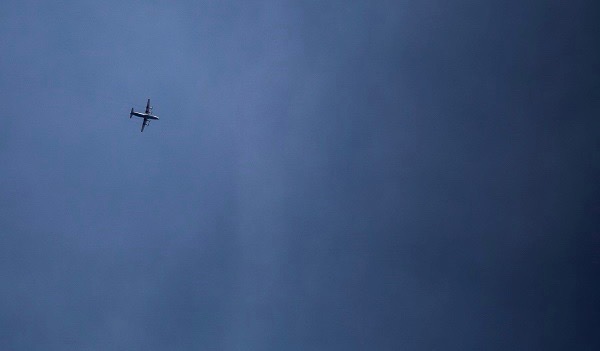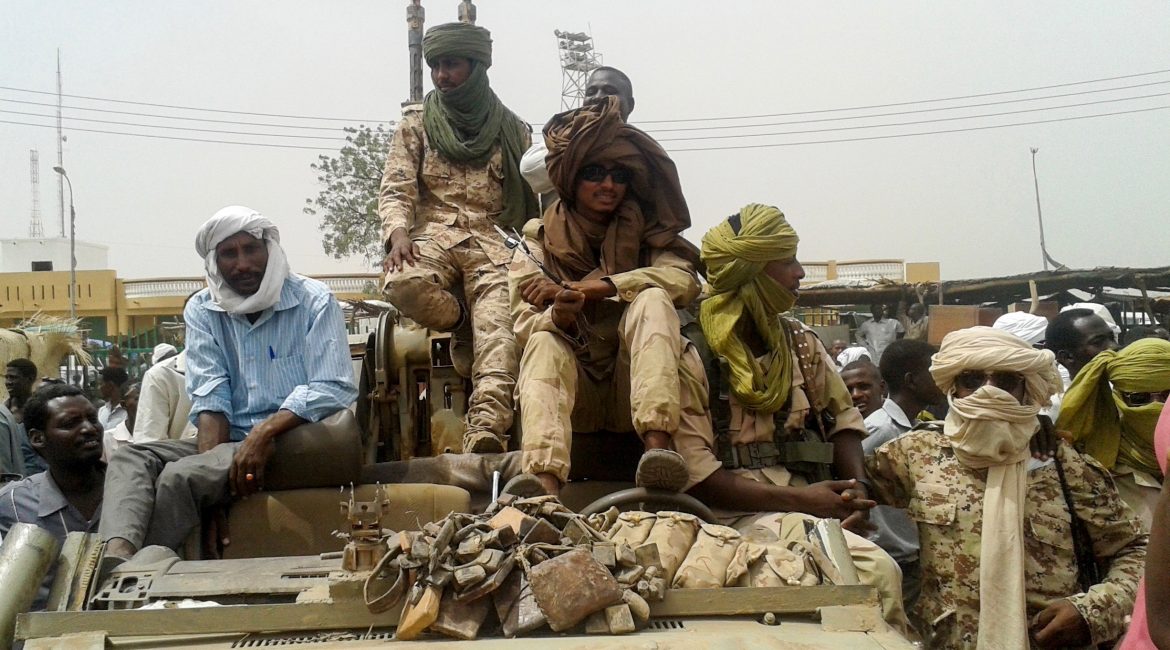When Antonovs hover in the skies above the Nuba Mountains, people hear them from miles away. The shallow buzz of the warplanes emerges slowly from the distance and eventually envelopes the sky.
Those on the ground sense it almost immediately. They dive into their shelters, built and fortified over the past two years of war in South Kordofan.
But the Nuban people weren’t always so attuned to the danger above. In the early days of Sudan’s bombing campaign, dozens could be killed in a single attack.
The people in the Nuba Mountains are mostly farmers. They weren’t trained to protect themselves from the bombs. No reliable records of the early death toll exist, but stories from the beginning of the war tell of devastation and destruction on a higher scale.
Today, Nuba’s residents know the sound of an approaching Antonov. They’ve dug foxholes by their kitchens, in their schools, next to their football fields and their markets. People have grown accustomed to the constant threat, but the bombings still take their toll. More than 1194 bombs have been dropped on South Kordofan in the last 18 months, and at least 52 people have been killed. Perhaps even greater are the number of people who have starved to death, or been driven from their homes by the violence. But without records, their struggles may remain hidden forever.
Mubarak was working in his fields when a bomb hit his house, killing his wife and children. “My head has become empty,” he said once he realized what he had lost. “It is hard to understand anything; how to continue.”
Many others have similar stories; their lives changed in a flash as the slow drone of another Antonov fades into the distance.
Sudan’s primary weapons in the campaign are its Antonovs, MiG jets, Su-25 and newly purchased Su-24 jets. These warplanes are without match in Sudan and designed to inflict real damage. With its jets, Sudan can choose its targets. While used in the military campaign against the SPLA-N they are just as often deployed on civilian targets.
Antonovs are not as precise as Sudan’s jet-fighters. The old, Russian cargo planes can’t carry traditional bombs. Instead, makeshift explosives are simply rolled out the cargo door. There isn’t any way of knowing who or what an Antonov will hit, making it often more terrifying for the citizens of the Nuba Mountains.
Those gravely injured by the bombs are taken to the Mother of Mercy Hospital – the only hospital in the rebel controlled areas of South Kordofan. There, most are seen by Dr. Tom Catena, a surgeon who has worked at the hospital throughout the course of the war. He says Antonovs often hit the hardest.
“[The victims] often have the loss of a limb, loss of a large piece of tissue, we’ve had some very terrible fractures, we’ve had some penetrating wounds of the abdomen and chest which cause a lot of damage and a few head injuries.”
And while the Mother of Mercy hospital takes all patients, Dr. Catena says the majority of the people hit by bombs are civilian. “Soldiers are more shrapnel from mortars or from, whatever, gunshots. But most of the Antonov wounds are civilians. For me it’s confusing. There’s no military objective to their bombing. [Sudanese Authorities] bomb in a civilian area there aren’t soldiers anywhere near it.”
In all of the bombing incidents Nuba Reports has recorded since April, 2012, less than 100 of the 1194 bombs fell near a military target. And the Sudanese Armed Forces attacks are not limited to aerial bombardment. Ground forces around Kadugli have also fired artillery into civilian areas such as Tuna, Katcha, Buram, Angolo and Kauda.
The shells – like the bombs dropped from antonovs – explode outwards, flinging molten, jagged metal into anything – or anyone – standing nearby. The bombs aren’t designed to level buildings, they are designed to maim and disfigure.
Usually, the bombs kill instantly, but many do not explode on impact and are triggered much later, often accidentally. On July 24, 2013, nine children were killed trying to pick up an unexploded rocket-propelled grenade near Cham Chaka. Five others were injured. While Nuba Reports does not have comprehensive figures on unexploded ordinance, it has documented many similar stories.
And death is not the only cost in levied by the bombs.
Local radio presenter Walid Omar said his family lost everything when an Antonov dropped bombs on their house. He was with his wife and children next-door. They took cover in a foxhole and braced, not knowing where the missiles would land. “With god’s protection,” said Walid, they were all safe.
But when he went to check on their house, he found only rubble and fire. In the space where their bed once stood, there was the twisted blackened metal of the frame. When Walid’s wife saw what happened, her legs collapsed, and neighbors had to carry her away. “There is no military here,” said Walid. “But [the government] is using all his forces, jets, antonovs and everything to just bomb civilians.”
Bombs also land in farms, erasing last year’s hard work and next year’s sustenance in one fell swoop. The destruction of farmland and crops has been perhaps the largest and most wide-reaching consequence of the campaign.
Since war reignited in South Kordofan in June of 2011, more than 70,000 people have fled to the Yida refugee camp in South Sudan. Many were simply afraid to plant their farms with Antonovs bombing daily. Others had large stores of grain destroyed. Still others saw their fields burn as fires from the bombs spread with the wind.
Yida is now the largest Nuban city – even larger than the Nuba Mountains capital, Kauda. But even there they are not safe from the conflict. In November, 2011, four bombs fell into the camp. Nobody was killed, but the bombings sparked international efforts to move refugees further from the northern border.
And for all the families who’ve left South Kordofan, thousands more have been displaced internally. There is no way of knowing just how many people have fled north, but for many too far to walk to Yida, it was the only option.
Without any means to plant, without the international support provided in Yida, it is unclear how the people displaced inside South Kordofan survive.
There was a small hope an end to the conflict – or at least humanitarian relief – could be negotiated. In September, the Sudan People’s Liberation Movement-North, SPLM-N, declared a unilateral ceasefire in response to the humanitarian crisis caused by flooding in northern Sudan. The government followed suit, declaring it’s own ceasefire for October. But the government and SPLA-N troops have since clashed in Buram county, dashing hopes for peace in the near-future.
Whatever the outcome, the scars of Khartoum’s relentless bombing campaign will mark many who have lived through it. One victim, named Nura, was making breakfast when the Antonovs came. Though she made it into her bomb shelter she couldn’t escape.
“the fire grew and closed me inside the bomb shelter. So I threw the fire off of me and got out,” she said.
Nura collapsed. When she woke up in the hospital, she found the skin on her right arm and the right side of her face had been severely burned. “My face was swollen. I couldn’t see for five days and someone had to take me to bathe.” On her head, pink streaks traced an outline of braids that were seared off in the fire.
Nura has had to stay at the hospital for months recovering. Though her scars remain, she expressed optimism about her progress. “Yesterday was the first day I bathed by myself,” she said. Even with the bombs continuing to fall, Nura looked forward to going home.

